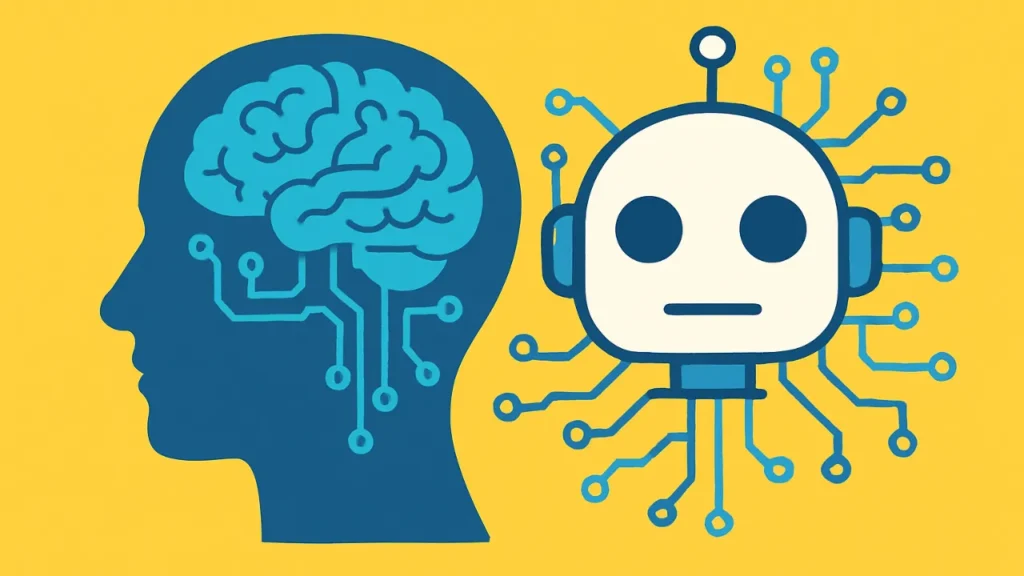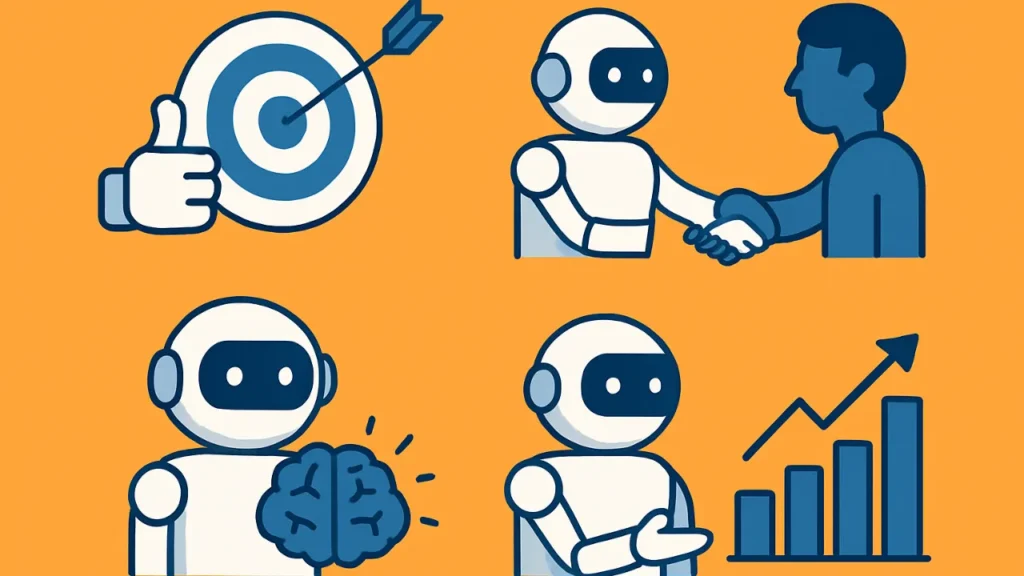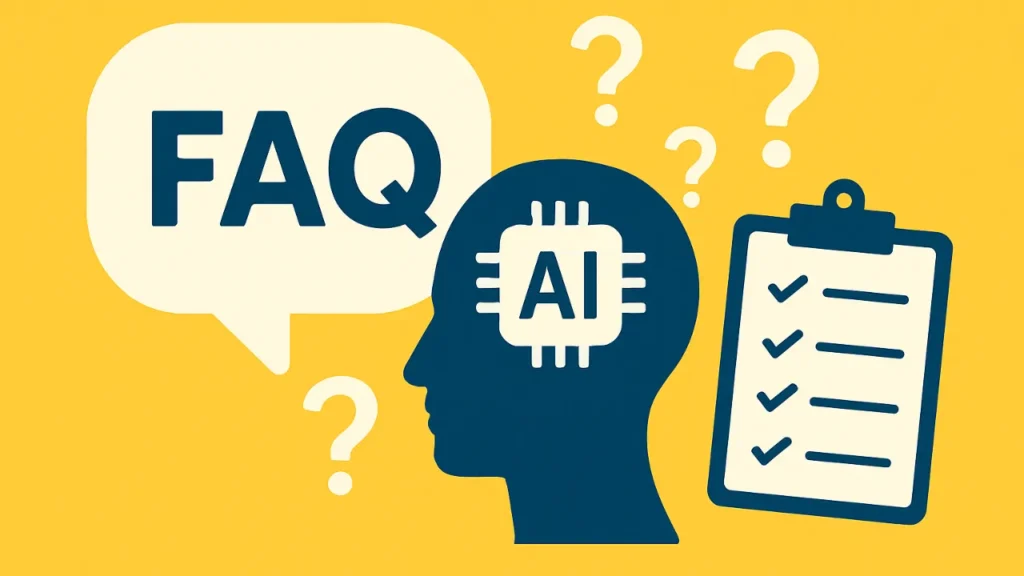Artificial Intelligence (AI) has grown at an unprecedented rate in recent years, changing many industries and having a big impact on our daily lives. Artificial intelligence (AI) technologies have advanced quickly, allowing machines to reason, learn, and carry out tasks that were previously only possible with human intelligence.
This article delves into the intriguing realm of artificial intelligence and examining goals of artificial intelligence.
To avoid AI detection, use Undetectable AI. It can do it in a single click.
Table of Contents
What is Artificial Intelligence?

A computer or machine that can mimic or replicate human abilities is said to possess artificial intelligence (AI). A variety of technologies are used in artificial intelligence (AI) to enable machines to perceive, understand, plan, act, and learn at levels comparable to those of humans.
In essence, artificial intelligence (AI) systems are able to perceive their surroundings, identify objects, assist in decision-making, resolve complicated issues, learn from the past, and mimic patterns.
To complete tasks like operating a vehicle or unlocking device screens by identifying faces, these skills are combined. Machine learning, natural language processing, computer vision, and other technologies are all part of the AI landscape.
These advanced technologies enable computer systems to learn from examples, comprehend human language, and make predictions.
While each technology is developing on its own, when combined with automation, data, analytics, and other technologies, it can transform companies and help them accomplish their objectives, whether those are improving customer service or supply chain optimization.
Goals of Artificial Intelligence

Fundamentally, the main goal of artificial intelligence is to imitate human intelligence in machines so that they can perform intricate tasks and make decisions on their own.
AI’s goals cover a broad spectrum of applications, such as but not restricted to:
Decision Making and Problem-Solving
Creating systems that can evaluate massive datasets, spot trends, and make data-driven decisions is one of artificial intelligence’s main goals. This capacity for effective problem-solving and decision-making is crucial in a variety of sectors, including manufacturing, transportation, healthcare, and finance.
Natural Language Processing
A key component of building machines that can comprehend and converse with people in natural language is AI-driven natural language processing. NLP makes machine interactions more natural and approachable by allowing virtual assistants, such as Siri and Alexa, to understand user inquiries and react accordingly.
Deep Learning and Machine Learning
AI subfields that concentrate on empowering machines to learn from data without explicit programming include machine learning and deep learning. These methods have produced notable breakthroughs in a variety of fields, including recommendation systems, computer vision, and speech recognition.
Automation and Robotics
Intelligent machines that can accurately and precisely carry out physical tasks have been created by combining robotics and artificial intelligence. AI-powered automation is changing industries all over the world, from autonomous cars to assembly line robots in manufacturing facilities.
Improving Medicine and Healthcare
AI in healthcare aims to enhance patient care, treatment planning, and diagnosis. AI algorithms can be used by medical professionals to evaluate medical images, forecast the course of diseases, and create individualized treatment programs for patients.
Fostering Innovation and Creativity
AI has the potential to encourage creativity and innovation in addition to its practical uses. AI-powered tools can help writers, designers, and artists push the limits of human imagination and come up with innovative new ideas.
Promote Synergy Between AI and Humans
Creating a synergy between AI and humans so that they can collaborate and improve each other’s capabilities rather than relying solely on one system is one of the main goals of artificial intelligence.
Achieving General Intelligence
The goals of artificial intelligence research is to create machines with general AI capabilities that can outperform humans at tasks by combining all of our cognitive abilities.
Because tasks would be completed more efficiently and humans would be relieved of dangerous duties like defusing bombs, this could increase overall productivity.
Encouraging Social Intelligence
Often referred to as “emotion AI,” affective computing is the area of artificial intelligence that can identify, decipher, and replicate human emotions, experiences, and feelings.
Affective computing enables computers to read body language, voice tones, and facial expressions, enabling AI systems to communicate and interact with people on a human level. Therefore, research efforts are focused on increasing machines’ social intelligence.
Permit Lifelong Learning
The foundation of AI solutions is learning. The ability of computer algorithms to increase an AI program’s knowledge through observations and prior experiences is conceptually implied by learning. In theory, AI systems analyze a set of input-output pairs for a specified function and utilize the results to forecast how new inputs will behave.
The primary difference between the two learning models used by AI—supervised and unsupervised—is the use of labeled datasets. AI systems need little to no human intervention because they learn on their own. ML, for instance, describes an automated learning procedure.
Facilitate Planning
The ability to imagine the future is offered by intelligent agents. Using predictive analytics, data analysis, forecasting, and optimization models, AI-driven planning establishes a procedural path for a system to accomplish its objectives and maximizes overall performance.
We can predict the future and determine the effects of our actions with the aid of artificial intelligence. Planning is important for cybersecurity, robotics, autonomous systems, and cognitive assistants.
Include a Knowledge Representation
Knowledge representation and knowledge engineering are central concepts in AI research. It has to do with using the ontology for a collection of objects, relations, and concepts to represent “what is known” to machines.
Real-world data is revealed by the representation, which a computer uses to resolve challenging real-life issues like making a medical diagnosis or conversing with people in natural language.
The represented data can be used by researchers to improve and optimize their AI models to achieve the intended outcomes, as well as to broaden the body of knowledge about AI.
Conclusion: Goals of Artificial Intelligence
In pursuit of goals of artificial intelligence, ground-breaking discoveries have emerged that are transforming a number of sectors and changing contemporary society. The effects of AI are extensive and revolutionary, ranging from robotics and automation to problem-solving and decision-making.
Navigating ethical issues and ensuring responsible development are crucial as we embrace AI’s potential in order to fully realize its beneficial effects on humanity.
FAQs on Goals of Artificial Intelligence

What are the primary goals of artificial intelligence?
The primary goals of artificial intelligence (AI) include enhancing human capabilities, automating tasks, improving decision-making processes, and achieving artificial general intelligence (AGI). AI aims to leverage technology to solve complex problems across various fields, including healthcare, finance, and education.
How does machine learning contribute to the goals of artificial intelligence (A)I?
Machine learning is a subset of AI that focuses on developing algorithms that allow AI systems to learn from data. By utilizing learning models, AI can make decisions and improve its performance over time, directly supporting the major goals of artificial intelligence development.
What is the role of ethical AI in achieving AI objectives?
Ethical AI practices are essential in ensuring that AI technologies are developed and deployed responsibly. This involves addressing biases, ensuring transparency, and promoting fairness in AI applications, which are crucial for achieving sustainable development goals.
Can you explain the concept of narrow AI?
Narrow AI refers to AI systems designed to perform specific tasks, such as image recognition or language processing. While it does not achieve general intelligence, narrow AI helps in realizing the goals of AI by effectively solving particular problems.
What are generative AI tools and their significance?
Generative AI tools are designed to create content or data based on learned patterns. These tools demonstrate the potential of AI in various applications, such as content creation and design, aligning with the objectives of AI development.
How do AI developers ensure the deployment of ethical AI?
AI developers focus on implementing ethical AI practices by integrating explainable AI and adhering to AI governance frameworks. This ensures that AI systems are accountable and align with societal values, contributing to a sustainable future.
What advancements in AI are shaping its future?
Recent advancements in AI, including deep learning and reinforcement learning, are enhancing the capabilities of AI systems. These developments are pivotal in pushing towards the ultimate goal of achieving strong AI and advancing the field of AI.
How can AI be used to advance sustainable development?
AI can be leveraged to optimize resource management, enhance efficiency in various sectors, and drive innovations that contribute to sustainable development goals. The impact of AI on environmental sustainability is a growing area of focus.
What is the relationship between AI and machine learning?
AI and machine learning are interconnected fields where machine learning serves as a crucial component of AI. Understanding the goals of artificial intelligence (AI) often involves exploring how machine learning models and algorithms can be utilized to achieve desired outcomes.
What is the future of AI?
The future of AI is bright, with ongoing research aimed at achieving artificial general intelligence and exploring the applications of AI across diverse sectors. As AI technology evolves, its impact on society will continue to grow, making it imperative to address the associated ethical considerations.
Read Also >>> How is AI Used in Transportation?


